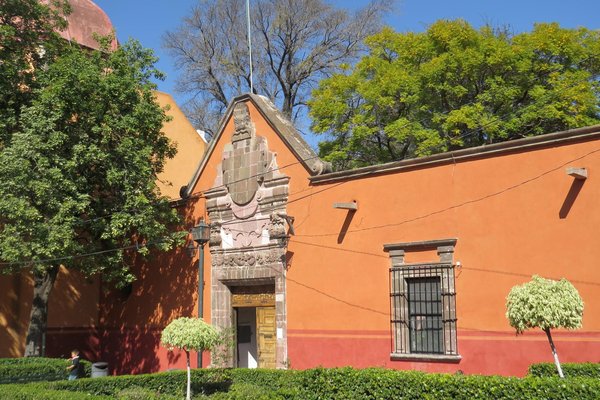Mexico
Camino Real
The Camino Real de Tierra Adentro is a 1400km section of the Silver Route stretching from Mexico City to New Mexico in the US.
The route was actively used from the mid-16th to the 19th centuries, mainly for transporting silver extracted from the mines of Zacatecas, Guanajuato and San Luis Potosí, and mercury imported from Europe. The site comprises 60 different locations, including bridges, haciendas, chapels, temples, a hospital and several cities.
Community Perspective: This is an annoying WHS as it repeats 5 components that are already inscribed on their own merits and it lacks the extension into what is now the USA - but local Sinuhe tries to refute these complaints. Among the smaller components, Tepotzotlán, Guadalupe and the Hacienda de San Blas are recommended.
Site Info
Official Information
- Full Name
- Camino Real de Tierra Adentro (ID: 1351)
- Country
- Mexico
- Status
-
Inscribed 2010
Site history
History of Camino Real
- 2010: Advisory Body overruled
- ICOMOS advised Referral to "Strengthen the comparative analysis ...; Further justify the selection of sites...; Re-consider the inclusion of the five already inscribed World Heritage properties; "
- 2010: Inscribed
- Inscribed
- Type
- Cultural
- Criteria
- ii
- iv
Links
- UNESCO
- whc.unesco.org
All Links
UNESCO.org
- whc.unesco.org — whc.unesco.org/
News Article
- April 6, 2019 mexiconewsdaily.com — INAH announces restoration of historic Querétaro bridge
Community Information
- Community Category
- Human activity: Transport and Trade
Travel Information
Exact locations inscribed twice (or more)
Mexico City hotspot
Recent Connections
-
Total Solar Eclipse since Inscription
April 8, 2024 (Town of Nazas) -
Untranslated Toponyms
Translates directly as "the Royal Inlan… -
Most beautiful villages
Pinos, Nombre de Dios and Mapimí are am…
Connections of Camino Real
- Geography
-
-
Located in a Capital City
Mexico City (Capital of Mexico) -
Linear inscriptions
It does include 4 "linear" stretches of road -some are less than 1km but there is also "Stretch of Camino Real between Nazas and San Pedro del Gallo This 64km stretch is the longest that has been preserved." (AB) It is described as a "Heritage route" rather than a "Linear Cultural Landscape"
-
- Trivia
-
-
Serial sites with the greatest number of locations
55 separate locations -
Total Solar Eclipse since Inscription
April 8, 2024 (Town of Nazas) -
WHS within walking distance
Mexico City Center to South -
Built or owned by Spanish
The Camino Real de Tierra Adentro developed to serve the great mining initiatives in northern Mexico during the Spanish colonial period (AB ev)
-
- History
-
-
Camino Real
"Camino Real de Tierra Adentro was the Royal Inland Road, also known as the Silver Route. The inscribed property consists of 55 sites and five existing World Heritage sites lying along a 1400 km section of this 2600 km route, that extends north from Mexico City to Texas and New Mexico, United States of America. The route was actively used as a trade route for 300 years, from the mid-16th to the 19th centuries, mainly for transporting silver extracted from the mines of Zacatecas, Guanajuato and San Luis Potosí, and mercury imported from Europe."
-
- Ecology
-
-
Liquid Mercury
"The market and commercial distribution of mercury are represented by the silverbearing sites of Mexico: ..... the Camino Real of Tierra Adentro and the Town of San Luis Potosi (2010, criteria (ii) and (iv))." (AB for Almaden and Idrija)
-
- Architecture
-
-
Neoclassical architecture
Ojuelos - a square with 19th century arcading in Mudejar and Neoclassic style (AB ev) -
Baroque
Former convent of San Francisco in Tepeji del Río - Baroque murals by Juan Correa and Francisco Martinez ; Durango - large Baroque Cathedral (AB ev) -
Mudejar style
Ojuelos - a square with 19th century arcading in Mudejar and Neoclassic style (AB ev)
-
- World Heritage Process
-
-
First sites filling gaps cited by ICOMOS
land route 2010 -
Exact locations inscribed twice (or more)
5 parts (Zacatecas, Guanajuato, San Miguel, Queretaro Mexico City) are inscribed as separate WHS
-
- Religion and Belief
-
-
Cathedrals
San Luis Potosi (Baroque 1670-1740) and Durango started 1675 Baroque -
Franciscan Order
Former convent of San Francisco in Tepeji del Río - established in 1560 by the Franciscans (AB ev) -
Christian Pilgrimage Sites
Cuencamé is renowned for the miraculous image of the Cristo y Senor de Mapimi and the annual pilgrimage, processions and dances associated with it. (AB ev)
-
- Human Activity
-
-
Pictographs
Cave of Ávalos - rock paintings, and many of the around ninety images depict horsemen and lassoed quadrupeds; Cave of Las Mulas de Molino This cave has an extensive group of paintings with black pigment. (AB ev) -
Cultural Routes
-
Contact Rock Art
In the Cueva de Avalos, several representations of the Christian cross exist (nom file), also horse carts etc -
Textiles
Ojuelos - 19th century wool textile buildings (AB ev) -
Silver production
Chalchihuites, Guanajuato, San Luis Potosí
-
- Constructions
-
-
Notable Bridges
Puente de San Rafael -
Cemeteries
Cemetery in Encarnación de Díaz - has a central patio surrounded by portals with crypts and mausolea decorated with neo-classical sculpture (AB ev) -
Hospitals
Former Royal hospital of San Juan de Dios of San Miguel de Allende (dating from 1770)
-
- WHS on Other Lists
-
-
Most beautiful villages
Pinos, Nombre de Dios and Mapimí are among Mexico's "pueblos magicos"
-
- Timeline
-
-
Built in the 16th century
Defined first as far as Zacatecas, the original terminus, between 1540/50 in order to link its silver mines with the coast. A number of the route's inscribed towns were developed to protect this road. It was then extended as far as El Paso by 1598. It was in regular use as the main route into New Mexico for 300 years. See
-
- WHS Hotspots
-
-
Mexico City hotspot
Includes the Historic Centre of Mexico City -
Queretaro Hotspot
-
- WHS Names
-
-
Untranslated Toponyms
Translates directly as "the Royal Inland road"..."was the northernmost of the four major "royal roads" that linked Mexico City to its major tributaries during and after the Spanish colonial era" (Wiki) others include the "Camino Real de los Tejas" to Texas via Monterrey.
-
News
- mexiconewsdaily.com 04/06/2019
- INAH announces restoration of hist…
Recent Visitors
Visitors of Camino Real
- Adam Hancock
- Alberto Rodriguez Gutierrez
- Alejandro Lau
- Alexander Barabanov
- Alexander Lehmann
- Alex Baranda
- Allison Vies
- Ana Lozano
- Argo
- Aspasia
- Atila Ege
- basementonline
- Bill Maurmann
- Boj
- brendairala
- brornt
- Can SARICA
- Carlo Sarion
- Carlos Sotelo
- Caspar
- chenqtao
- Cheryl
- Christine
- Christoph
- Clyde
- czesioszpachelka
- Daniela Hohmann
- Daniel Chazad
- Delphine Delaunay
- Digits
- Dimitar Krastev
- Don Irwin
- DouglasR
- Els Slots
- Erik Jelinek
- Eva Kisgyorgy
- Fan Yibo
- Flemus3252
- Francky D'Hoop
- Frédéric M
- Frederik Dawson
- George Gdanski
- GeorgeIng61
- giloudepuertorico
- Grendel Gongan
- Hammeel
- Iain Jackson
- Ian Cade
- Ivan Rucek
- Jacob Choi
- Jana and Matt
- Janos
- Jarek Pokrzywnicki
- Javier Coro
- Jawnbeary
- Jay T
- Jean Lecaillon
- Jens
- João Aender
- Joel on the Road
- jonathanfr
- Jon Opol
- JoStof
- KarenBMoore
- Kasper
- Ken DJ
- Kevin McFarland
- kiank37
- Kim, Soo-youn
- Krzysztof B
- Kurt Lauer
- Kyle Magnuson
- Lara Adler
- lichia
- Ligocsicnarf
- ljowers
- Loic Pedras
- Lucas Del Puppo
- Lucio
- Ludvan
- Luis Filipe Gaspar
- Lukasz Palczewski
- Malgorzata Kopczynska
- Martina Rúčková
- Matthewsharris
- MaxHeAnouBen
- Michael Ayers
- Michael Novins
- michaelsballard
- Mihai Dascalu
- Mikko
- MMM
- MoPython
- nan
- Nihal Ege
- palka25
- Paola Laura
- Patrik
- Paul Schofield
- Petteri
- Philipp Leu
- Philipp Peterer
- Piotr Wasil
- pressdm
- puessergio
- Ralf Regele
- Randi Thomsen
- Roger Ourset
- Roman Bruehwiler
- Sabrina Liebehentschel
- Santiago Lafuente
- Sclowitz
- Sergio Arjona
- Shandos Cleaver
- sibariam
- sncjob
- Solivagant
- Stanimir
- Stanislaw Warwas
- Svein Elias
- Szucs Tamas
- Tamara Ratz
- Thomas Buechler
- Tommy W
- triath
- Tsunami
- ValiaVeweth
- Van Hung
- Velvetlapis
- Waters88
- Wojciech Fedoruk
- Xiquinho Silva
- Yi Han Goh
- ZCTLife
- Zoë Sheng
- Zos M
Community Reviews
Show full reviews
I visited this WHS in December 2021 and January 2022. I visited several locations that are already WHS on their own such as Mexico City, Zacatecas, Guanajuato, Queretaro and San Miguel de Allende, as well as a few other locations such as Aguacalientes, San Luis Potosi and Guadalupe.
Having walked 1,100km of the Routes to Santiago de Compostela in Spain and France and then visited other different sites along these European pilgrimage routes, I didn't have high expectations since I wasn't willing to walk any particular stretch of the Camino Real in Mexico. That said, from what I visited during my road trip from Mexico City to Zacatecas and back, I wasn't able to find any particular individual site or collection of sites which in my opinion would be deserving of inscription or possess any OUV. Unlike the Routes to Santiago de Compostela in Europe, the inscribed Camino Real is just part of the way in Mexico, perhaps the uninscribed part to Santa Fe, New Mexico, US has more to offer and would add more value to this WHS.
Most of the locations which are already a WHS, highlighting a particular minor building for the Camino Real WHS too, pale in comparison to the other colonial WHS in Mexico or other inscribed ways on the WH list. For example the former royal hospital of San Juan de Dios in San Miguel de Allende is now just another colourful building in a not so popular part of town which …
Keep reading 0 comments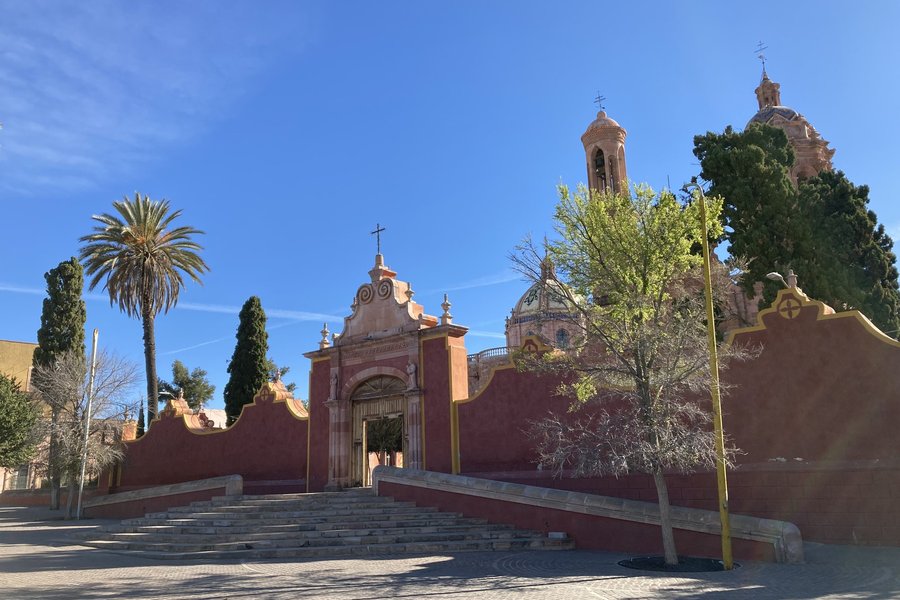
Time of visit: November 2021
Duration of visit: several hours scattered throughout 2 weeks
Mode of transportation: by rental car, across CDMX, Queretaro, San Miguel de Allende, and Guanajuato
Review and experience
As several reviews have noted, this was an "effortless" WHS, as each of my visits was part of a different and dedicated WHS to that city. I had originally intended to visit San Juan del Rio as it wasn't co-listed as another WHS, but after seeing Queretaro, SMA, and Guanajuato over the course of a few days and running short on time, I decided to skip the slight detour. I did have a chance to briefly visit the site within SMA - "Former Royal hospital of San Juan de Dios", but only from the exterior as the church was closed. It would have been nice to see the actual paved Camino Real de Tierra Adentro, but the several bridges I previewed online near SMA seemed quite dilapidated and inconspicuous, so I decided to not make such detours.
Overall, I'm glad to see such a large swath of sites inscribed as part of this WHS, as hopefully through this there will be better protection for the dozens of churches inscribed for years to come, but I was disappointed by the significant overlap with existing WHS. Furthermore, I didn't quite grasp why this particular "Camino Real" was inscribed; California for example has its own "Camino Real" and the cultural exchange was somewhat similar. I also …
Keep reading 0 comments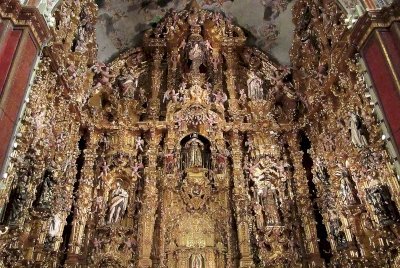
I first traveled Mexico's Royal Road, the Camino Real de Tierra Adentro, in 1998 as part of a church mission trip which took me from El Paso by road to Durango. It's a shame I wasn't particularly aware of the significance of the route at the time, and I didn't pay much attention to the historic center of Durango. I corrected this oversight on a visit to Mexico City almost 20 years later in January 2017. I wasn't content to count the Zócalo as the only representation of this World Heritage Site, which includes 60 different sites related to the historic road, so I took a day trip out to Tepotzotlán, a small, charming city just north of the capital. Tepotzotlán is home to the former college of San Francisco Javier which in the 16th century trained Jesuit priests who would later serve throughout "New Spain". This inscribed site highlights the religious importance of the Camino Real. It is now also home to an incredible museum dedicated to the Viceroyalty of New Spain. The museum showcases liturgical art and artifacts and colonial furniture and collections amidst the many rooms in the historic complex. Most spectacular is the gilded excess of the Church of San Francisco Javier, an amazing sight to behold. If you have time in Mexico City, I highly recommend a day trip to Tepotzotlán to see this museum.
Logistics: There are direct buses from Mexico City (via the bus stations next to the Cuatro Caminos and Rosario …
Keep reading 0 comments
Visiting Camino Reale de Tierra Adentro – a route which probably has a history of very harsh conditions hundreds of years ago, makes you somewhat respectful. Nevertheless as an overseas traveler the knowledge of these facts is superficial, but still we would like to look into this site - at least some of the authentic places that the site comprises of - to see what it’s like today.
On our three week visit to Mexico july 2017 we had singled out a number of sites on the “Camino” for potential visits, in addition to WHS cities. It’s easy to tick of this site with no extra effort, but we would like to see if we could find other parts of the old road.
Three days into our visit, on our route from Tula de Allende towards Morelia, we headed to Cañada de Madero, Hacienda la Cañada and the vicinity. The gps was taking us from major roads and onto the smaller roads when we finally arrived at a location that in fact was a piece of the original road. This is now a calm part of central Mexico. We drove several kilometers of cobblestone street passing a romantic stone bridge – the Colima bridge and passed a few riding “vaqueros”. Houses and buildings along the road are hardly as old as the road, but very nice looking. Together with the lush vegetation it makes up a “picture” that really looked nice. In “the end” of the stub there was the …
Keep reading 0 comments
I was born in a small community of Zacatecas, in central Mexico, right in in the first third to "Road to Santa Fe", now called “Camino Real de Tierra Adentro” (incorrectly since in Mexico existed five or six important Real Roads). Therefore, I cannot write any description objectively. I am sure of its regional value, but I don't want to mention a possible universal value, I'm not an expert on those issues. I think everyone has to have some empathy trying to understand the love that other people have to their local places. In this case, probably in the United States the value to the road is sometimes more a political strategy or simple love to the History, maybe more like an anecdote; but let me tell you, in Mexico, this road still awakens full passions of love and genuine interest of anyone, in an inestimable way. To Mexicans, it is still an alive road (even if many sections of the original roads no longer exist): everyone living in these 10 states can narrate old legends about mines or treasure owners. Old legends about terrifying ghosts living in haciendas or anecdotes of our parents and grandparents as young travelers, old stories about passions, deadly sins or love (for example, my parents met for the first time on a pilgrimage). Old stories about apaches attacking wagons. The route also arouses in some people some national sentiments: it completely coincides with the "Route of Independence": the route that followed Miguel Hidalgo to …
Keep reading 0 comments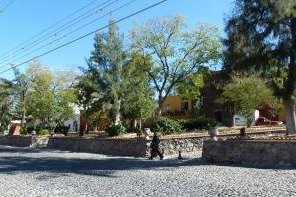
Hooray! a visited site for practically no effort. I feel like this is some sort of cosmic repayment for all those empty European fields I've trekked to feigning interest in some rotten wood or a concrete post. My main experience of it is through four already inscribed historic centres, so it didn't really feel like I was seeing anything at all.
However, sat in our hotel in San Miguel de Allende I decided to check the maps of places inscribed that weren't already part of a WHS, and found out one was less than 500m away. Sadly for anyone wanting to read about some new found remote oasis it was the church Els visited above. Our experience was essentially the same, we saw a nice church and a closed school, and well that is about it.
The one place of note we have seen on the Camino Real de Tierra Adentro isn't actually part of the WHS listing, and that was its terminus in Santa Fe in the USA. It was one of the more interesting cities in that country that I have visited. I would recommend a look around if you are visiting Taos pueblo, or if you have an interest in Georgia O'Keefe. There were signs around illustrating its role on the Camino Real and it certainly felt like there was a Mexican influence on the centre.
So that is about all I can say about this site, we got some idea of its previous role and the …
Keep reading 0 comments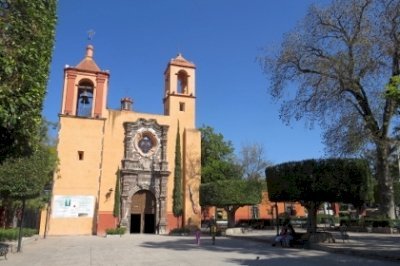
If you've seen any of the major colonial cities, even if you've only been to the center of Mexico City, you can tick off this one too. It's actually such a pity that the Mexicans have included these large city centers into this Camino Real site, as it takes away the focus of what this is about. It would have been better to single out certain monuments along the way.
While visiting San Miguel de Allende, I made an effort to go and see the "Former Royal hospital of San Juan de Dios". This building is added to the area that is already inscribed with the San Miguel de Allende & Atotonilco WHS. San Juan de Dios lies in a quiet and original quarter a bit outside of the city center. I was happy to find an inscription monument for the Camino Real WHS here at the little square where the church and former hospital are located.
Construction of the Royal hospital of San Juan de Dios started in 1753. The "hospital" also consists of a church (of course!) and a cemetery. It was located in a strategic location at an obliged point of the pass to the Tierra Adentro. It sustained all ill travelers, no matter what race they were, where they came from, or how poor they were. The church nowadays is still a parish church, but the former hospital seems to have been taken over by an elementary school (although the nomination file says it …
Keep reading 0 comments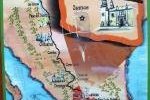
Well, with the inscription of this site Mexico has really outdone France both in getting places inscribed twice (5 here are already on the list - Mexico City, Queretaro, San Miguel, Guanajuato and Zacatecas!) and in creating an inscription which encompasses so much of the country. No wonder ICOMOS had some “problems” with the nomination and wanted it referred for, among other matters, re-consideration of “the inclusion of the five already inscribed World Heritage properties”.
That said it contains many of Mexico’s great colonial sites – but I wonder how many of the additional sites are really worthwhile and to what extent they are riding on the coat-tails of the overall concept. We have really only visited the southern part. My photo taken in 2008 is of a sign “advertising” the Camino Real taken in the, already WHS inscribed, city of Zacatecas (about a third of the way up!)
The real driver behind the nomination (and various web sites show that it has been a 10 year project) seems to have come from the state/city of Durango – which happens to be celebrating its bicentenary this year. As Durango proudly proclaims “10 States are included in the project (but) Durango has 16 sites (more than any other)” - The full list is given as “Chihuahua has five, 16 Durango, 5 Zacatecas, 2 Aguascalientes, 3 Jalisco, 3 San Luis Potosi, 4 Guanajuato, 3 Queretaro and two state of Mexico” –yes I know this is only 9 states but I quote accurately …
Keep reading 0 comments
